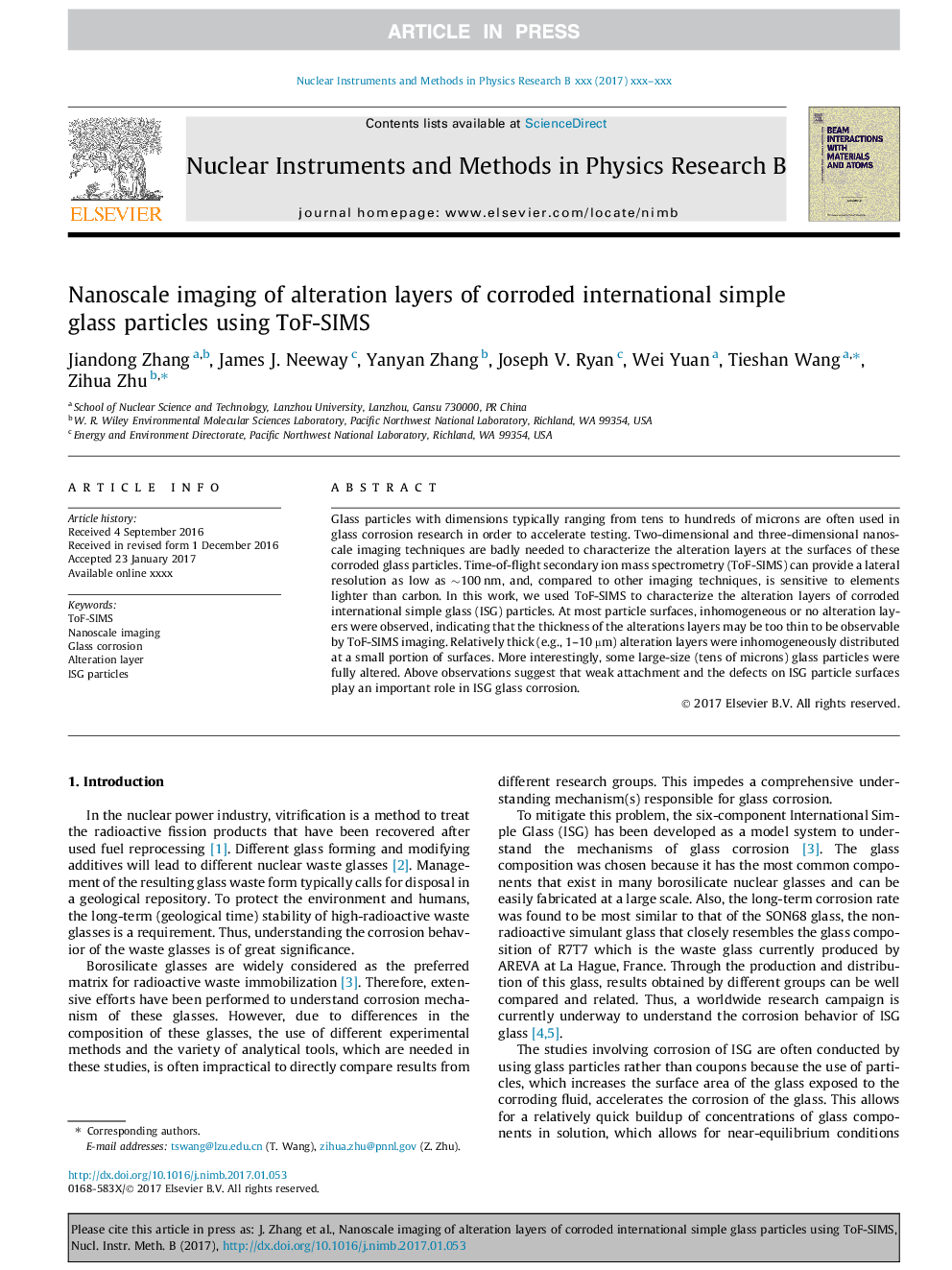| Article ID | Journal | Published Year | Pages | File Type |
|---|---|---|---|---|
| 5467163 | Nuclear Instruments and Methods in Physics Research Section B: Beam Interactions with Materials and Atoms | 2017 | 7 Pages |
Abstract
Glass particles with dimensions typically ranging from tens to hundreds of microns are often used in glass corrosion research in order to accelerate testing. Two-dimensional and three-dimensional nanoscale imaging techniques are badly needed to characterize the alteration layers at the surfaces of these corroded glass particles. Time-of-flight secondary ion mass spectrometry (ToF-SIMS) can provide a lateral resolution as low as â¼100 nm, and, compared to other imaging techniques, is sensitive to elements lighter than carbon. In this work, we used ToF-SIMS to characterize the alteration layers of corroded international simple glass (ISG) particles. At most particle surfaces, inhomogeneous or no alteration layers were observed, indicating that the thickness of the alterations layers may be too thin to be observable by ToF-SIMS imaging. Relatively thick (e.g., 1-10 µm) alteration layers were inhomogeneously distributed at a small portion of surfaces. More interestingly, some large-size (tens of microns) glass particles were fully altered. Above observations suggest that weak attachment and the defects on ISG particle surfaces play an important role in ISG glass corrosion.
Keywords
Related Topics
Physical Sciences and Engineering
Materials Science
Surfaces, Coatings and Films
Authors
Jiandong Zhang, James J. Neeway, Yanyan Zhang, Joseph V. Ryan, Wei Yuan, Tieshan Wang, Zihua Zhu,
